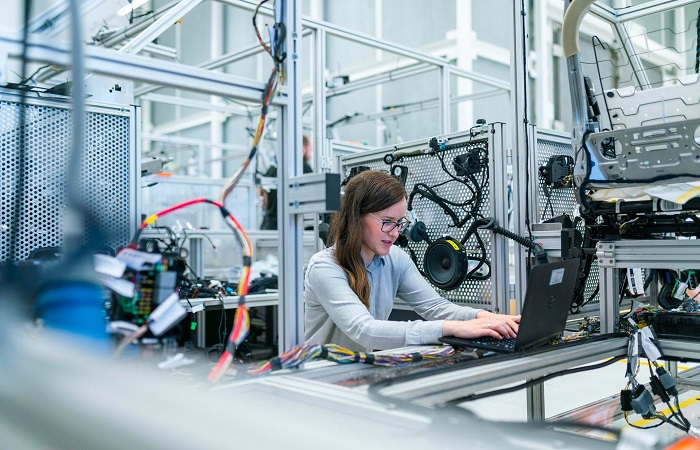
Regardless of size, all production facilities need a form of reliable maintenance. When it comes to regular, high-scale production and retail goods, making sure your facility always has running machines that aren’t likely to break down anytime soon and halt your business operations is essential.
Efficiently managing and streamlining your maintenance strategy and approach can be challenging. This is especially true if you have a small facility with various tools and equipment you need to get the job done. Luckily, several technological innovations can help you when it comes to streamlining your facility’s maintenance needs. But, comparisons like uipath vs microsoft power automate are much needed to find the best innovation in the industry.
- Innovative HVAC Systems
You should consider both cost and comfort for smaller production facilities when it comes to your machinery and workers, especially in hotter, more humid months. Poor working conditions for your staff and equipment can negatively affect your facility’s productivity and end-product quality. Incorporating cutting-edge HVAC systems can keep your team more comfortable, allowing them to work to their fullest, saving you money in what would’ve been a low production season.
However, old-fashioned HVAC systems are expensive to run and install. Not to mention, they often waste a lot of energy and require more regular maintenance than they’re worth. It’s important to make sure you update any systems you currently have in place.
One upgrade to an old HVAC you should invest in is movement-activated air conditioning. Instead of blasting on the cool setting all day, movement-activated conditioning has a series of infrared sensors placed all over the facility. When they detect the presence of people, the system turns on until the room becomes vacant again.
It helps to get a smart movement-activated HVAC system. Production facilities often have a lot of non-human moving parts. A poor system might turn on conditioning because of a machine working. Additionally, if your machines require extra cooling during the summer months, you can set the conditioning software to switch on in an empty room if it exceeds a certain temperature.
- CMMS Software
Traditionally, management software was exclusive to enormous production facilities, where it’s near impossible to manage without digital help. But that’s no longer the case. As a small production facility, you can implement a multifunctional CMMS software to reap as many benefits as a larger facility. CMMS stands for a computerized maintenance management system, which can help you monitor and track multiple maintenance aspects at the same time from a centralized location.
When investing in CMMS software for your facility, look for one that allows you to integrate and manage all parts of your facility. For instance, it can help managers create virtual schedules for production deadlines and distribute necessary work hours between available staff members. It also lets you track component repair histories, allowing you to analyze each equipment’s return on investment by gauging how much it’s generating in revenue and costing in maintenance and downtime. All of which allows you to estimate your facility’s assets value.
- Cybersecurity
As with most technology-reliant production facilities, you must adopt proper cybersecurity programs into your company to keep your digital assets safe. However, to implement proper cybersecurity measures, you first need to evaluate your system’s access and weak points. Take note of what devices and systems are connected to your main network. Make sure you include human error and your staff in your risk evaluation.
After assessing your security gaps, it’s time for counteraction. Implement a firewall that connects to all of your network’s devices, making sure no decentralized devices could be vulnerable to attacks. Lastly, create a plan to respond to attacks, patch any security gaps that arise, or hire the help of cybersecurity professional.
- Mobile Integration
A critical factor to consider before adopting any new technology into your facility is mobile integration. This is particularly important in a production facility since employees and managers don’t spend much of their time at stationary desks. Adding mobile integration to your facility’s systems ensures that they’re always connected and can get alerts and notifications as needed.
Luckily, most software nowadays automatically integrates mobile devices to streamline operations. For instance, you can integrate security measures with workers’ phones to ensure they’re never off the grid. You can also require staff to carry a refreshed QR code for security clearance and tracking purposes within the facility.
Technology is an Investment
On the surface, smaller operations don’t seem like they need the same intensive technological investments as their larger counterparts—but that couldn’t be further from the truth. Starting small with technical integration allows you to reap the same benefits, save money, and earn more profit. It also ensures you retain similar approaches when your facility grows in size. That way, you’re not struggling to find the right systems at a time where a low production day means much more in losses than it means currently.
